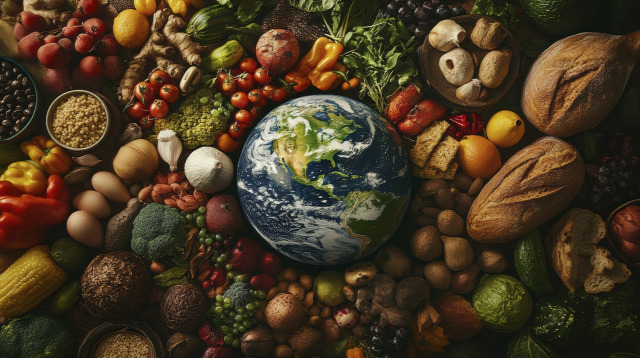
The Clean Label Ingredients Market is gaining momentum as consumers demand transparency, simplicity, and authenticity in the products they purchase. This shift is driven by a growing awareness of health and wellness, as well as concerns over artificial ingredients and processed foods. In response, food manufacturers are increasingly turning to clean label ingredients—those that are natural, minimally processed, and free from synthetic additives.
Market Overview
“Clean Label Ingredients” refer to natural ingredients such as fruits, vegetables, grains, and spices that are free from artificial additives, preservatives, flavours, and colours. The rise of the Clean Label Ingredients Industry reflects a broader trend toward health-conscious consumerism, with people seeking food and beverage products that are both nutritious and trustworthy.
The Global Clean Label Ingredients Market was valued at $19.77 billion in 2020, which is expected to grow with a CAGR of 8.65% and reach $32.08 billion by 2026 during the forecast period of 2020-2026, according to BIS Research.
Key Market Drivers
Consumer Demand for Transparency:
- Consumers are increasingly aware of health risks linked to artificial ingredients.
- There is a growing preference for products with simple, recognizable ingredients.
- Clean label ingredients offer transparency, fostering consumer trust.
Health and Wellness Trends:
- The shift towards healthier lifestyles is driving the demand for clean label ingredients.
- Concerns about obesity, diabetes, and lifestyle diseases are prompting consumers to focus on nutritional content.
- Clean label ingredients are seen as healthier, aligning with wellness trends.
Growth of Organic and Natural Products:
- The organic food market is expanding, with consumers favouring products free from synthetic chemicals.
- Clean label ingredients, often derived from organic and non-GMO sources, are contributing to this market growth.
Stricter Food Regulations:
- Governments and regulatory bodies are enforcing stricter rules on food labelling and the use of artificial ingredients.
- Food manufacturers are reformulating products with clean label ingredients to comply with regulations and maintain consumer trust.
Request for an updated version of the report on Clean Label Ingredients Market
Key Trends in the Market
The global market of Clean Label Ingredients is evolving, with several key trends shaping its growth:
Plant-Based Ingredients: Consumers are increasingly looking for plant-based alternatives to traditional animal-derived ingredients in everything from dairy products to meat substitutes.
Functional Ingredients: Functional ingredients that offer health benefits beyond basic nutrition are a growing trend in the clean label space. These include probiotics, prebiotics, antioxidants, and natural fibres that promote gut health, boost immunity, and improve overall well-being.
Minimal Processing: Consumers are not only concerned about the ingredients themselves but also how they are processed. Clean label products emphasise minimal processing, ensuring that ingredients retain their natural nutritional value and flavour.
Natural Flavors and Sweeteners: Artificial flavours and sweeteners are increasingly being replaced by natural alternatives such as stevia, monk fruit, and honey.
Market Segmentation
- Market by Type
- Market by Application
- Market by Product
- Market by Region
Key Prominent Market Companies
- Beneo
- Brisan Group
- Cargill
- Chr. Hansen A/S
- Ingredion Incorporated
- Kerry Group
- Sensient Technologies
- Kellogg’s Company
- Nestlé
- Organic India
Get more detailed insights on FoodTech Market Research Reports.
Future Market Outlook
The future of the Clean Label Ingredients Market looks promising as demand for natural, healthy, and transparent products continues to rise. In the coming years, we can expect to see more innovative clean label ingredients, especially in the areas of plant-based proteins, natural flavours, and functional ingredients.
Furthermore, the market will benefit from advancements in food processing technologies that enhance the quality and shelf life of clean label products without compromising their natural integrity. As consumer preferences continue to evolve, the clean label ingredients market is set to play a central role in the future of food and beverage production.
Conclusion
The Global Clean Label Ingredients Industry is experiencing significant growth as consumers increasingly prioritise health, wellness, and transparency in their food choices. With the rise of natural, minimally processed ingredients and the ongoing shift toward sustainable food systems, the market is poised for further expansion. As companies continue to innovate and meet the demands of modern consumers, clean label ingredients will remain at the forefront of the food industry's transformation.





